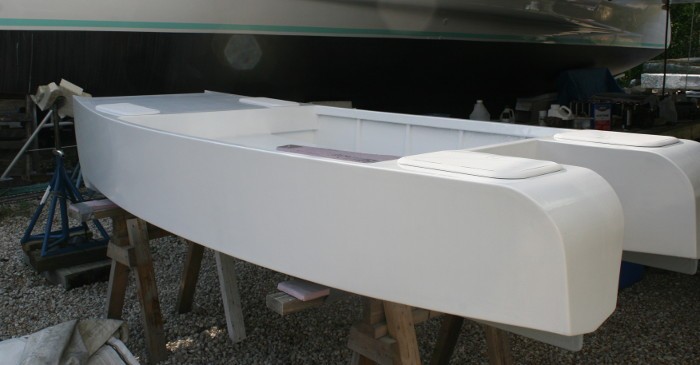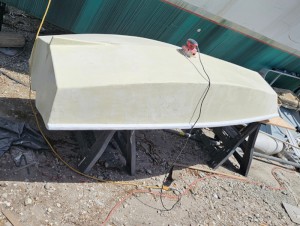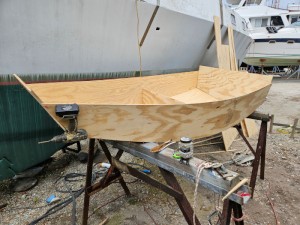Kaimusailing
s/v Kaimu Wharram Catamaran
| Vessel Name: | Kaimu |
| Vessel Make/Model: | Wharram Custom |
| Hailing Port: | Norwalk, CT |
| Crew: | Andy and the Kaimu Crew |
| About: | Sailors in the Baltimore, Annapolis, DC area. |
17 April 2024 | St Marys, GA
Dinghy Skeg
I was suffering with what seemed like a cold and also had allergy symptoms. I awoke and felt fine. The green pollen that was coating everything was gone. Maybe it will return.
07 April 2024 | St. Marys, GA
Clammy Hands
Items came in from TEMU, the Chinese cut rate retailer. One was a nice little drone that cost about twelve and a half dollars. It looked like an easy thing to play with while I coughed and sneezed. I was fighting a summer cold, even though it is not summer elsewhere, it seems like it here. A nice [...]
02 April 2024 | St. Marys, GA
Sun Doggie
After laminating the cedar strips onto the gunwales of the dinghy I found the screws I used wouldn’t come out. The epoxy had seized them. The screw heads were stripped so I cut a straight slot in the heads with the cut off wheel. The cedar smoked when the screw heads got red hot. I could remove [...]
21 March 2024 | St. Marys, GA
Just Add Water
The rainy weekend started off with overcast and fog but no rain. It looked like I might be able to get something done on the D4 dinghy. I wanted to change the bow seat which is really the bow deck. The sailing option uses the deck to hold the freestanding mast. I didn’t like how the deck looked, [...]
01 March 2024 | St. Marys, GA
D4 Dinghy Alternative Seats
The rain event was more wind than rain, strong winds with gusts up to 44 mph. We drove into town to see what the harbor was like. There was a small sailboat that had dragged anchor and was sitting close to shore. The tide was out. We left and played with Bleu at Notter’s Pond.
23 February 2024 | St. Marys, GA
D4 Inside Seams
Day two of the dinghy build started out with me finishing wiring the hull bottoms together on the centerline of the bottom panels. This was much easier than the wiring of the chine edges of the bottom panels and the side panels.
Bonhomme Richard pt. V

.
Paint needs to be thick enough to cover and protect the epoxy, but can’t be applied too thickly and cause runs and drips. Using a brush adds brush stroke pattern to the paint job, using a roller can cause orange peel and lines in the paint left by the roller’s edges, using a spray painter can cause a whole list of problems, but can also give a perfect paint job, if all goes perfectly. The preparation work for spray painting can be and usually is more involved than the actual spraying of the paint. I like to get out a brush and just paint away and accept the rustic finish it makes. A roller is only helpful for large areas.
.
The pad painter applies the paint in a thin film with no brush marks, but it is tedious, because the pad can only accept a small amount of paint. To make paint pads I used the method in the Goudgeon epoxy book. A paint roller is cut lengthwise into 3 pieces, and those pieces are then cut into three smaller pieces about 3 inches wide. This makes a paint pad with a rounded bottom. Handles left over from chip brushes are hot glued to the pads. A glue line is deposited down the centerline of the pad from side to side right down the middle, and another is deposited on one edge of the pad. The handle is then quickly set into the melted glue. When the glue cools, the paint pad is ready to paint. The type of paint roller chosen depends on the paint, the nap of the roller shouldn’t be too shaggy and the materials of the roller have to be unaffected by the paint. I used phenolic 1/4“ pink rollers to make my pads.
.
The paint job came out great in areas that I had faired properly, not so great on other areas. It’s easier to see the imperfections after a coat of paint is applied.
.
Meanwhile next door Richard was painting his catamaran dinghy. It was nearly perfect, although he complained like it was a real mess. Here is a photo of it. Not too bad.






